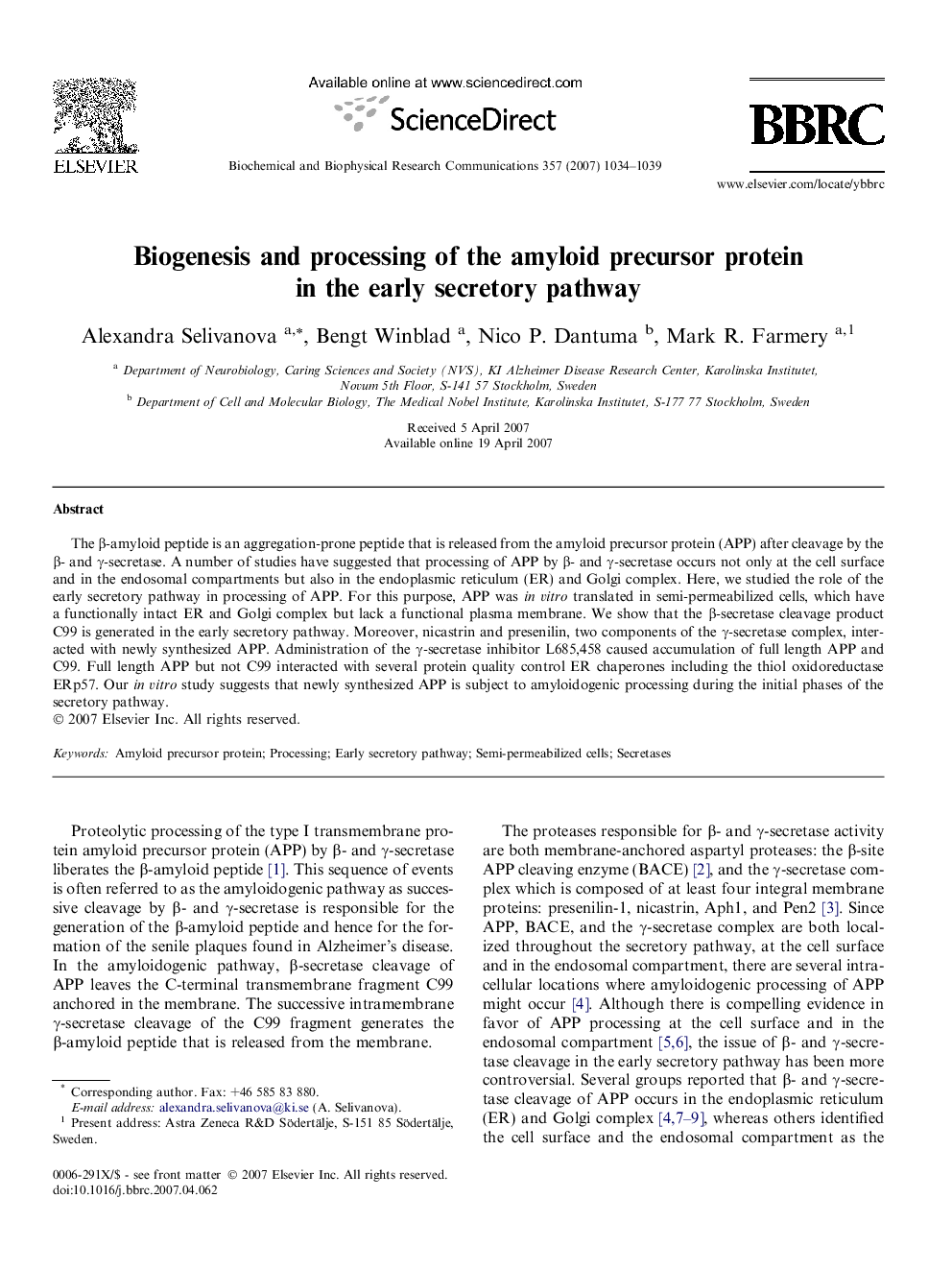| Article ID | Journal | Published Year | Pages | File Type |
|---|---|---|---|---|
| 1937972 | Biochemical and Biophysical Research Communications | 2007 | 6 Pages |
The β-amyloid peptide is an aggregation-prone peptide that is released from the amyloid precursor protein (APP) after cleavage by the β- and γ-secretase. A number of studies have suggested that processing of APP by β- and γ-secretase occurs not only at the cell surface and in the endosomal compartments but also in the endoplasmic reticulum (ER) and Golgi complex. Here, we studied the role of the early secretory pathway in processing of APP. For this purpose, APP was in vitro translated in semi-permeabilized cells, which have a functionally intact ER and Golgi complex but lack a functional plasma membrane. We show that the β-secretase cleavage product C99 is generated in the early secretory pathway. Moreover, nicastrin and presenilin, two components of the γ-secretase complex, interacted with newly synthesized APP. Administration of the γ-secretase inhibitor L685,458 caused accumulation of full length APP and C99. Full length APP but not C99 interacted with several protein quality control ER chaperones including the thiol oxidoreductase ERp57. Our in vitro study suggests that newly synthesized APP is subject to amyloidogenic processing during the initial phases of the secretory pathway.
